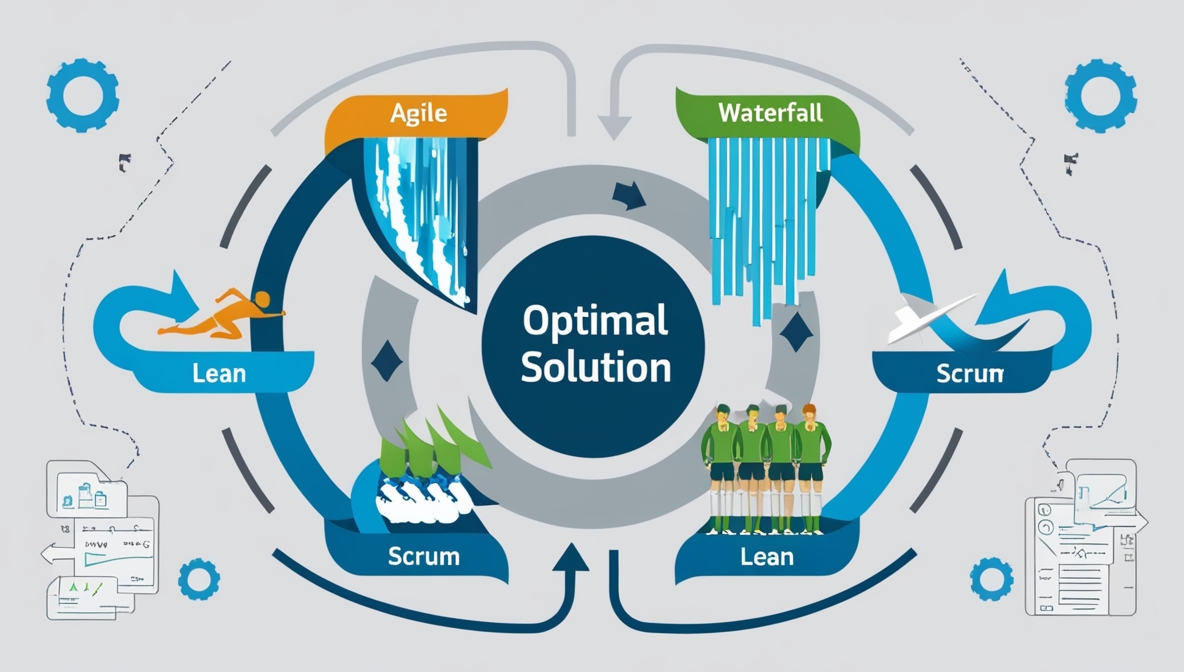This presentation discusses the systems development process, identifies factors driving efficiency and effectiveness, compares two major frameworks of development, and offers recommendations for the framework to use.
With a proliferation of systems development methodologies, CIOs are often at a loss as to which one works the best in creating systems that produce business value and are delivered in the shortest time using the lowest amount of money. This discussion can help. It identifies factors driving performance in the systems development process and using real-life implementations compares two development methodologies to recommend which works best and why.
In the intricate world of IT, professionals grapple with decisions that shape the future of organizations, particularly when it comes to systems development. Amidst the technological evolution, there's a pressing need for systems that epitomize business value, fiscal prudence, and efficiency. Yet, the market is flooded with methodologies, each promising to be the ideal roadmap to achieving these goals. This saturation often culminates in a perplexing crossroads for decision-makers, especially CIOs tasked with spearheading their entities into the realms of innovation and technological prowess.
This confusion is compounded by the stark realization that an organization's competitiveness, innovative edge, and market presence heavily rely on its ability to churn out robust, agile, and cost-effective systems. With a plethora of systems development methodologies at their disposal, leaders find themselves ensnared in a paradox of choice. This indecision isn't without consequences; the wrong choice can derail system performance, time-to-market, and budget, significantly impairing the organization's market stance.
Delving deeper, real-world scenarios are employed to illustrate the ramifications of mismatched methodologies. These instances not only spotlight the pitfalls but also bring to the fore critical yet often neglected drivers of successful system development. These elements are pivotal, influencing diverse project outcomes, from team dynamics to the end product's adaptability and functionality.
However, clarity emerges through an in-depth analysis and side-by-side comparison of two preeminent development frameworks. This examination transcends surface-level attributes, delving into the core of these methodologies against tangible performance indicators and practical applications. It's not a mere verdict on the superior methodology, but an elucidation of why and how specific frameworks excel in particular environments or organizational setups. Such revelations are indispensable for IT aficionados, providing them with both the direction and the logic behind choosing a methodology that aligns perfectly with their strategic goals.
In essence, this is more than a guide; it's a beacon for IT decision-makers, navigating them through the fog of choices toward a decision that’s not just apt but transformative. It dissects the roots and nuances that influence technological growth and proficiency, offering not just a solution, but a catalyst for monumental progress in the digital battleground.
CIOs can leverage this document as a strategic tool to address several real-world challenges they face in the realm of systems development, thereby enhancing decision-making, streamlining development processes, and ultimately leading their organizations toward greater technological efficacy and business success.
- Informed Decision-Making: By providing a detailed comparison between two major development methodologies, this document empowers CIOs with critical insights into how each works, the contexts in which they are most effective, and their respective pros and cons. Understanding these aspects ensures CIOs select a methodology that aligns with their organizational needs, project scopes, and long-term IT strategies, reducing the risks associated with trial-and-error approaches.
- Optimized Resource Allocation: CIOs are often under immense pressure to deliver more with less. This resource guides them in selecting a development methodology that not only aligns with their project requirements but also optimizes the use of available resources—time, human capital, and finances. By understanding the efficiencies of each methodology, CIOs can deploy their resources more strategically, potentially achieving better results without overextending their budgets or teams.
- Enhanced Project Delivery Timelines: One of the biggest challenges in systems development is project delays. Through real-life case analyses, this document illustrates how the right methodology can streamline workflows, enhance team productivity, and reduce time-to-market. Learning from these cases, CIOs can foresee potential bottlenecks and implement strategies to mitigate them, thereby ensuring projects stay on track.
- Improved Stakeholder Communication: The document’s insights into how different methodologies impact project flow can help CIOs set realistic expectations with stakeholders, including top management, shareholders, and clients. By understanding the capabilities and limitations of each approach, CIOs can communicate more effectively regarding timelines, budget needs, and projected outcomes, thus fostering trust and transparency.
- Fostering Innovation: By highlighting how different methodologies can be conducive to innovative thinking and problem-solving, this resource encourages CIOs to foster a culture of innovation within their teams. Selecting a methodology that allows for flexibility, adaptability, and continuous improvement can empower teams to think outside the box and contribute more creatively to the project’s success.
- Risk Mitigation: Every IT project comes with its set of risks. This document, through its comparative analysis, helps CIOs understand the risk profiles associated with each methodology. This knowledge is crucial in developing robust risk mitigation plans, ensuring that projects are not derailed by unforeseen challenges.
- Scalability and Future-Proofing: The IT landscape is perpetually evolving, and systems need to be scalable and adaptable. The insights provided help CIOs select methodologies that not only meet current project requirements but also incorporate provisions for future scalability and adaptability, keeping the organization at the forefront of technological advancements.
In conclusion, this document serves as a compass for CIOs, guiding them through the complex landscape of systems development methodologies. By translating the insights and recommendations into practice, they can steer their IT projects and organizations toward enhanced efficiency, competitiveness, and innovation in an increasingly digital world.

